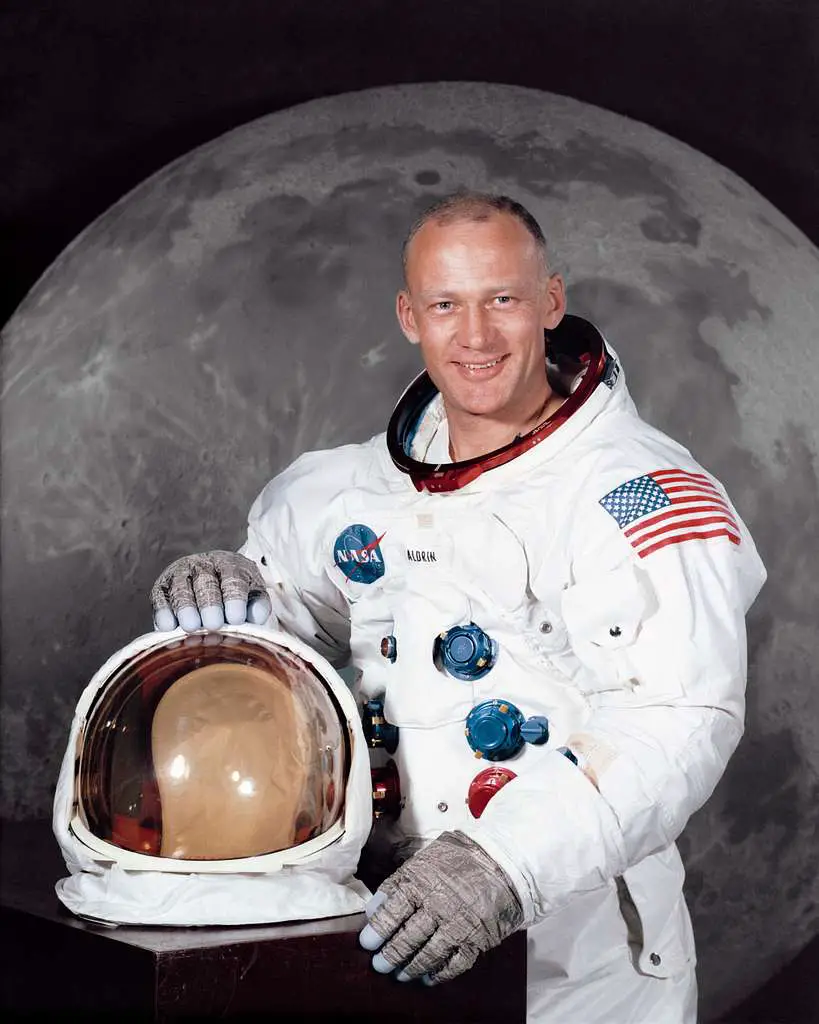On July 20, 1969, the Apollo 11 mission of NASA safely landed on the moon, and astronaut Buzz Aldrin became the second person to walk on the surface of the moon. This event marked a watershed moment in human history. This astounding accomplishment marked a critical milestone in human space exploration and cemented Aldrin’s place in history as one of the most recognized astronauts in the world. Aldrin was the first person to walk on the moon. However, on his way to the moon and beyond, he encountered a lot of victories, as well as difficulties and personal troubles.
The Early Years
Edwin Eugene Aldrin Jr. was given the nickname “Buzzer” by his younger sister shortly after his birth in 1930. His full name was Edwin Eugene Aldrin Jr. It is interesting to note that in 1988, he legally changed his name to Buzz Aldrin, a name that would later come to be associated with the exploration of space. After graduating from Montclair High School in 1947, Buzz Aldrin went on to attend the United States Military Academy at West Point, from which he received his degree in 1951. Aldrin’s educational trajectory was similarly noteworthy.
Military and Academic Achievements
During the Korean War, Buzz Aldrin was a proficient fighter pilot who flew 66 combat flights in F-86 Sabre planes. Prior to his illustrious career at NASA, Aldrin served in the United States Air Force as a fighter pilot. His thirst for knowledge extended far beyond the confines of the military, and in 1963 he enrolled at the Massachusetts Institute of Technology (MIT) to acquire a PhD in the field of astronautics. During the course of his life, he was awarded honorary degrees from a total of six of the world’s most renowned educational institutions in recognition of the tremendous contributions he made to the field of space exploration.
Beginning with NASA: Prior to the Apollo 11 mission
In 1963, NASA chose Buzz Aldrin to be the person who would be in charge of leading the development of procedures for spacecraft docking and rendezvous. Because of his extensive experience and unwavering commitment, he was chosen to serve as an astronaut on the Gemini 12 mission in 1966. As a result of Aldrin’s participation in this mission, the last crewed flight of the Gemini program, which he completed alongside fellow astronaut Jim Lovell, Aldrin’s reputation as an experienced astronaut was further enhanced.
The Apollo 11 Mission: Round Trip to the Moon and Back
The historic Apollo 11 mission was Buzz Aldrin’s finest achievement in his long and distinguished career. The spacecraft was sent into lunar orbit on July 18, 1969, after being launched into space from Cape Kennedy in Florida on July 16, 1969. After those four days, Aldrin and Neil Armstrong were able to descend to the surface of the moon in the Lunar Module, which was famously referred to as the Eagle.
Experiments conducted and samples collected by the two astronauts during their amazing 21 hours and 36 minute stay on the moon have fundamentally altered our understanding of that celestial body. A plaque on Eagle’s leg had the words, “Here men from the planet Earth first set foot upon the moon. ” During their time spent on the moon, they also left behind an American flag, a patch paying tribute to the members of the Apollo 1 crew who were killed in the accident, and the patch. It was the month of July 1969 A.D. We came in peace for all of mankind.
Buzz Aldrin after Apollo
After achieving something of such monumental significance, Buzz Aldrin felt both exhilarated and overawed upon his return to Earth. He struggled with a variety of issues, including clinical depression and dependence on alcohol. The impact of seeing the moon’s barren terrain up close and personal had a significant influence on him, and he had a hard time adjusting to life on Earth after being on the moon for so long.
Aldrin’s Personal Life
Aldrin’s private life, in addition to his professional life in space, has been scrutinized by the media on numerous occasions. His first wife, Joan Archer, freely highlighted the challenges she encountered as the spouse of an astronaut and national hero when they were married. He has been married four times in total. Aldrin’s personal connections, similar to those of many other public celebrities, were not without their fair share of difficulties.
Cameos and Guest Appearances Are Creating a Buzz in the Media
Aldrin was able to maintain his status as a famous character in popular culture in spite of the difficulties he encountered. He had a number of famous cameo performances, including ones in “The Simpsons” and “Futurama.” He has appeared in a number of movies and television shows. When he was spotted hitting a conspiracy theorist in September of 2002, the video of the incident went viral and became one of his most memorable moments. In addition, he lent his voice and persona to the character of Buzz Lightyear, a well-liked action figure in the legendary “Toy Story” franchise, therefore securing his position as an important figure in contemporary pop culture.
Conclusion
The life of Buzz Aldrin, who was given the nickname “Buzzer” as a young boy and went on to become the second person to set foot on the moon, serves as a powerful example of human perseverance and the never-ending drive to discover new things. Even while his accomplishments in space are absolutely astounding, the fact that he battled melancholy and dealt with other personal obstacles serves as a reminder that even the most recognized persons have to deal with difficulties in their lives. The victories and setbacks that Buzz Aldrin overcame will forever be inextricably linked to his legacy. As a result, he will leave an indelible mark not only on the annals of space exploration but also on the annals of popular culture.
![]()
